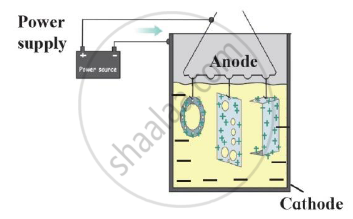Advertisements
Advertisements
प्रश्न
What are the adverse effects of corrosion?
उत्तर
The adverse effects of corrosion are as follows:
- Damage to commercial aeroplanes that could result in possible in-flight problems
- Damage to oil pipelines that could cause a costly and dangerous rupture that creates significant environmental damage.
- Damage to bridge supports that could cause a bridge failure
- Release of harmful pollutants from iron corrosion that contaminates the air
- Costs of repairing or replacing household equipment that fails
- Lose of efficiency
- Contamination of product
- Damage of metallic equipments
- Inability to use metallic materials
- Lose of valuable materials such as blockage of pipes, mechanical damage of underground water pipes
- Accidents due to mechanical lose of metallic cars, aircrafts etc.
- Causes pollution due to escaping products from corrosion
- Depletion of natural resource
संबंधित प्रश्न
Choose the correct answer from the options given below:
Heating an ore in a limited supply of air or in the absence of air at a temperature just below its melting point is known as
A. Smelting
B. Ore-dressing
C. Calcination
D. Bessemerisation
Fill in the following blank with suitable word:
The corrosion of iron is called ................
Name a common metal which is highly resistant to corrosion.
No chemical reaction takes place when granules of a rusty-brown solid A are mixed with the powder of another solid B. However, when the mixture is heated, a reaction takes place between its components. One of the products C is a metal and settles down in the molten state while the other product D floats over it. It was observed that the reaction is highly exothermic.
(a) What could the solids A and B be?
(b) What are the products C and D most likely to be?
(c) Write the chemical equation for the reaction between A and B leading to the formation of C and D. Mention the physical states of all the reactants and products in this equation and indicate the heat change which takes place.
(d) What is the special name of such a reaction? State one use of such a reaction.
(e) Name any two types of chemical reactions under which the above reaction can be classified.
Identify the process shown in the diagram and explain it in short

Answer the following question.
List two properties of alloys.
Which of the following method is used to prevent the accumulation of greenish layer on brass due to corrosion?
Write scientific reason.
Anodization method is useful for prevention of the corrosion of the aluminium.
State two conditions necessary for rusting of iron.
Give an example of a chemical reaction for each of the following situations:
Sound is produced
